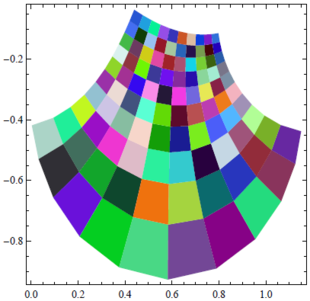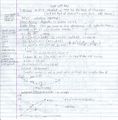12-240/Classnotes for Thursday September 20: Difference between revisions
No edit summary |
|||
| (6 intermediate revisions by 3 users not shown) | |||
| Line 1: | Line 1: | ||
{{12-240/Navigation}} |
|||
In this class, the professor completes the lecture about complex number and then introduces vector space. |
In this class, the professor completes the lecture about complex number and then introduces vector space. |
||
== Complex number == |
== Complex number == |
||
| Line 23: | Line 23: | ||
From '''Q''' ( set of quotient number) we can also construct a set containing i, which has a square equal to -1, and this construction is considered relatively easy |
From '''Q''' ( set of quotient number) we can also construct a set containing i, which has a square equal to -1, and this construction is considered relatively easy |
||
Meanwhile, from '''Q''', the construction of R is extremely hard and hence, of course, much more complicated. |
|||
| ⚫ | |||
Since complex number has two real number elements, it can be express in geometric form in coordinate plane, in this case, called complex plane. |
|||
Consider two complex numbers: A=a1 + b1i, B= a2 + b2i. |
|||
In complex plane they are expressed in the form of two points A (a1, b1), B(a2, b2) |
|||
Note that the y axis and x axis in ordinary coordinate plane will become Img axis and Real axis respectively in complex plane. |
|||
The point C (a1 + a2, b1 + b2) is the expression of the sum of A and B in complex plane. |
|||
Moreover, complex number can be expressed in polar coordinates: |
|||
== Lecture 4, scanned notes upload by [[User:Starash|Starash]] == |
|||
<gallery> |
|||
Image:12-240-0920-1.jpg|Page 1 |
|||
Image:12-240-0920-2.jpg|Page 2 |
|||
Image:12-240-0920-3.jpg|Page 3 |
|||
</gallery> |
|||
| ⚫ | |||
== Scan of class note == |
|||
== Another version of scanned notes == |
|||
<gallery> |
|||
[[Image:IMG.jpg]] |
|||
Image:Sept 20 class note scan1.jpg|Page 1 |
|||
Image:Sept 20 class note scan2.jpg|Page 2 |
|||
Image:Sept 20 class note scan3.jpg|Page 3 |
|||
</gallery> |
|||
Latest revision as of 21:54, 27 September 2012
| |||||||||||||||||||||||||||||||||||||||||||||||||||||||||
In this class, the professor completes the lecture about complex number and then introduces vector space.
Complex number
Definition and properties
C={(a,b): a, b R}
1 ( of C) = (1,0); 0 ( of C)= (0,0)
i=(0,1)
(a,b)+(c,d)=(a+c,b+d); (a,b)x(c,d)=(ac-bd,ad+bc)
i^2=-1
C contains R as {(a,0)} ( actually, this is not the set of real number but a copy of it )
Political statement
The professor totally disagrees with the name complex number because, indeed, the construction of C is much easier than the construction of R.
From Q ( set of quotient number) we can also construct a set containing i, which has a square equal to -1, and this construction is considered relatively easy Meanwhile, from Q, the construction of R is extremely hard and hence, of course, much more complicated.
Interpretation of complex number
Since complex number has two real number elements, it can be express in geometric form in coordinate plane, in this case, called complex plane.
Consider two complex numbers: A=a1 + b1i, B= a2 + b2i.
In complex plane they are expressed in the form of two points A (a1, b1), B(a2, b2)
Note that the y axis and x axis in ordinary coordinate plane will become Img axis and Real axis respectively in complex plane.
The point C (a1 + a2, b1 + b2) is the expression of the sum of A and B in complex plane.
Moreover, complex number can be expressed in polar coordinates:
Lecture 4, scanned notes upload by Starash







